 W
WColonel Frederick Robertson Aikman VC was a Scottish recipient of the Victoria Cross, the highest and most prestigious award for gallantry in the face of the enemy that can be awarded to British and Commonwealth forces.
 W
WColonel Robert Hope Moncrieff Aitken was a Scottish recipient of the Victoria Cross, the highest and most prestigious award for gallantry in the face of the enemy that can be awarded to British and Commonwealth forces.
 W
WWilliam Douglas Hall Baillie was a New Zealand politician. He was known as W. D. H. Baillie and often referred to as Captain Baillie owing to his military background.
 W
WGeneral Sir Samuel James Browne, was a British Indian Army cavalry officer in India and Afghanistan, known best as the namesake of the Sam Browne belt. He was a British recipient of the Victoria Cross, the most prestigious award for gallantry in combat that can be awarded to British and Commonwealth forces.
 W
WGeneral William Martin Cafe VC was an English recipient of the Victoria Cross, the highest and most prestigious award for gallantry in the face of the enemy that can be awarded to British and Commonwealth forces.
 W
WGeneral George Campbell of Inverneill, C.B., K.A (1803–1882) was Commandant of the Royal Artillery and served in the East India Company.
 W
WField Marshal Sir Neville Bowles Chamberlain was a distinguished British military officer in British India. He served in the Bengal Army and saw action in the First Anglo-Afghan War, Gwalior Campaign, Second Anglo-Sikh War, Indian Rebellion and Second Anglo-Afghan War. He later became Commander-in-chief of the Madras Army.
 W
WField Marshal Colin Campbell, 1st Baron Clyde,, was a British Army officer. After serving in the Peninsular War and the War of 1812, he commanded the 98th Regiment of Foot during the First Opium War and then commanded a brigade during the Second Anglo-Sikh War. He went on to command the Highland Brigade at the Battle of Alma and with his "thin red line of Highlanders" he repulsed the Russian attack on Balaclava during the Crimean War. At an early stage of the Indian Mutiny, he became Commander-in-Chief, India and, in that role, he relieved and then evacuated Lucknow and, after attacking and decisively defeating Tatya Tope at the Second Battle of Cawnpore, captured Lucknow again. Whilst still commander-in-chief he dealt with the "White Mutiny" among East India Company troops, and organised the army sent east in the Second Opium War.
 W
WBernard Diamond VC in Portglenone, County Antrim, Ireland was a recipient of the Victoria Cross, the highest and most prestigious award for gallantry in the face of the enemy that can be awarded to British and Commonwealth forces.
 W
WMajor-General Sir Henry Marion Durand, was a British Indian Army officer and colonial administrator.
 W
WDenis Dynon VC was an Irish recipient of the Victoria Cross, the highest and most prestigious award for gallantry in the face of the enemy that can be awarded to British and Commonwealth forces.
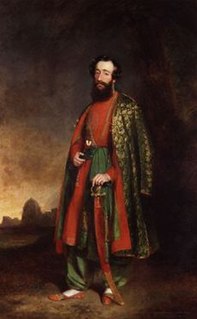 W
WMajor-General Sir Herbert Benjamin Edwardes DCL was a British administrator, soldier, and statesman active in the Punjab region of British India. He is best known as the "Hero of Multan" for his pivotal role in securing British victory in the Second Anglo-Sikh War.
 W
WStephen Garvin, born in Cashel, County Tipperary, was an Irish recipient of the Victoria Cross, the highest award for gallantry in the face of the enemy that can be awarded to British and Commonwealth forces.
 W
WGeneral Sir Walter Raleigh Gilbert, 1st Baronet, was an army officer in the British East India Company.
 W
WGeneral Sir Charles John Stanley Gough was a senior British Indian Army officer and a recipient of the Victoria Cross, the highest award for gallantry in the face of the enemy that can be awarded to British and Commonwealth forces.
 W
WField Marshal Hugh Gough, 1st Viscount Gough, was a British Army officer. After serving as a junior officer at the seizure of the Cape of Good Hope during the French Revolutionary Wars, Gough commanded the 2nd Battalion of the 87th Regiment of Foot during the Peninsular War. After serving as commander-in-chief of the British forces in China during the First Opium War, he became Commander-in-Chief, India and led the British forces in action against the Marathas defeating them decisively at the conclusion of the Gwalior Campaign and then commanded the troops that defeated the Sikhs during both the First Anglo-Sikh War and the Second Anglo-Sikh War.
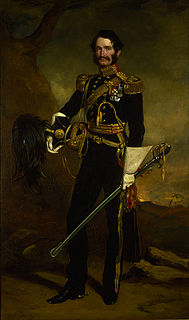 W
WGeneral Sir James Hope Grant, GCB was a British Army officer. He served in the First Opium War, First Anglo-Sikh War, Indian Mutiny of 1857, and Second Opium War.
 W
WLieutenant-Colonel James Augustus Grant was a Scottish explorer of eastern equatorial Africa. He made contributions to the journals of various learned societies, the most notable being the "Botany of the Speke and Grant Expedition" in vol. xxix of the Transactions of the Linnean Society. He married in 1865 and settled down at Nairn, where he died in 1892. He was buried in the crypt of St Paul's Cathedral. Grant's gazelle, one of the largest and handsomest of that family in Africa, was named in his honor.
 W
WField Marshal Sir Patrick Grant, was a senior Indian Army officer. He fought at the Battle of Maharajpore during the Gwalior Campaign, at the Battle of Mudki, the Battle of Ferozeshah and the Battle of Sobraon during the First Anglo-Sikh War and at the Battle of Chillianwala and the Battle of Gujrat during the Second Anglo-Sikh War. During the Indian Mutiny, as acting Commander-in-Chief, India, he directed the operations against the mutineers, sending forces under Henry Havelock and James Outram for the relief of Cawnpore and Lucknow. He later became Governor of Malta.
 W
WMajor-General William Wilberforce Harris Greathed was a British senior officer in the Bengal Engineers.
 W
WGeneral Sir Edmund Haythorne was a British Army officer who served as Adjutant-General in India.
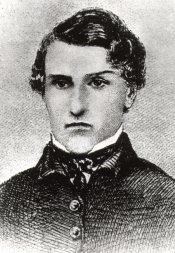 W
WDuncan Charles Home VC was a recipient of the Victoria Cross, the highest and most prestigious award for gallantry in the face of the enemy that can be awarded to British and Commonwealth forces.
 W
WMajor General Sir John Eardley Wilmot Inglis was a British Army officer, best known for his role in protecting the British compound for 87 days in the siege of Lucknow.
 W
WRobert Kells, was a recipient of the Victoria Cross.
 W
WJohn Kirk VC was an English soldier in the British Army who served in the Second Anglo-Sikh War and the Indian Mutiny. He is notable as a recipient of the Victoria Cross, the highest and most prestigious award for gallantry in the face of the enemy that can be awarded to British and Commonwealth forces.
 W
WLieutenant-General Sir George St Patrick Lawrence was an officer in the British Indian Army.
 W
WMajor Samuel Hill Lawrence VC, born in Cork, was an Irish recipient of the Victoria Cross, the highest and most prestigious award for gallantry in the face of the enemy that can be awarded to British and Commonwealth forces.
 W
WGeneral Sir Edward Lugard was a British Army officer who served as Adjutant-General in India (1857–58) and later as Permanent Under-Secretary of State for War (1861–71) at the War Office.
 W
WLieutenant-General Sir Harry Burnett "Joe" Lumsden was a British military officer active in India.
 W
WGeneral Henry Dundas, 3rd Viscount Melville GCB was a senior British Army officer and peer.
 W
WRobert Cornelis Napier, 1st Baron Napier of Magdala was a British Indian Army officer. He fought in the First Anglo-Sikh War and the Second Anglo-Sikh War before seeing action as chief engineer during the second relief of Lucknow in March 1858 during the Indian Rebellion of 1857. He also served in the Second Opium War as commander of the 2nd division of the expeditionary force which took part in the Battle of Taku Forts, the surrender of Peking's Anting Gate and the entry to Peking in 1860. He subsequently led the punitive expedition to Abyssinia July 1867, defeating the Emperor Tewodros II of Ethiopia with minimal loss of life among his own forces and rescuing the hostages of Tewodros.
 W
WField Marshal Sir Henry Wylie Norman, was a senior Indian Army officer and colonial administrator. He served in the Second Anglo-Sikh War, the campaign against the Kohat Pass Afridis, the suppression of the Santhal rebellion, and the suppression of the Indian Mutiny. He became military member of the Viceroy's Council in 1870, in which role he maintained the policy of ensuring that the Indian Army were less well armed than British troops there to deter another mutiny. As a result, he became a member of the Council of India; and in his later years he became Governor of Jamaica and then Governor of Queensland.
 W
WWilliam Oxenham VC was an English recipient of the Victoria Cross, the highest and most prestigious award for gallantry in the face of the enemy that can be awarded to British and Commonwealth forces.
 W
WCharles Pye was an English recipient of the Victoria Cross, the highest and most prestigious award for gallantry in the face of the enemy that can be awarded to British and Commonwealth forces.
 W
WSir Richmond Campbell Shakespear was an Indian-born British Indian Army officer. He helped to influence the Khan of Khiva to abolish the capture and selling of Russian slaves in Khiva. This likely forestalled the Russian conquest of the Khiva, although it ultimately did not prevent it.
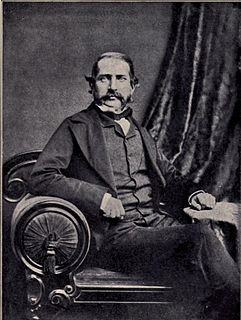 W
WRichard Baird Smith was a British engineer officer in the East India Company, who played a prominent part as Chief Engineer in the Siege of Delhi of 1857.
 W
WTristram Charles Sawyer Speedy was a well-known English explorer and adventurer during the Victorian era.
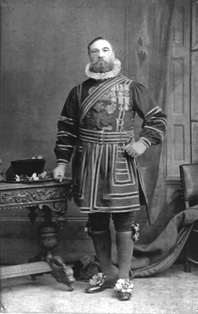 W
WDavid Spence VC was a Scottish recipient of the Victoria Cross.
 W
WMajor-General Reynell George Taylor was a British military officer who served in the Bengal Army.
 W
WMajor General Sir Henry Tombs VC KCB was a recipient of the Victoria Cross, the highest and most prestigious award for gallantry in the face of the enemy that can be awarded to British and Commonwealth forces.
 W
WGeneral Sir John Watson, was an English recipient of the Victoria Cross, the highest and most prestigious award for gallantry in the face of the enemy that can be awarded to British and Commonwealth forces. An officer serving with the Bengal Army, Watson received his Victoria Cross for actions at Lucknow during the Indian Mutiny. He later rose to the rank of general in the British Indian Army.
 W
WSir Henry Yule was a Scottish Orientalist and geographer. He published many travel books, including translations of the work of Marco Polo and Mirabilia by the 14th-century Dominican Friar Jordanus. He was also the compiler of a dictionary of Anglo-Indian terms, the Hobson-Jobson, with Arthur Coke Burnell.